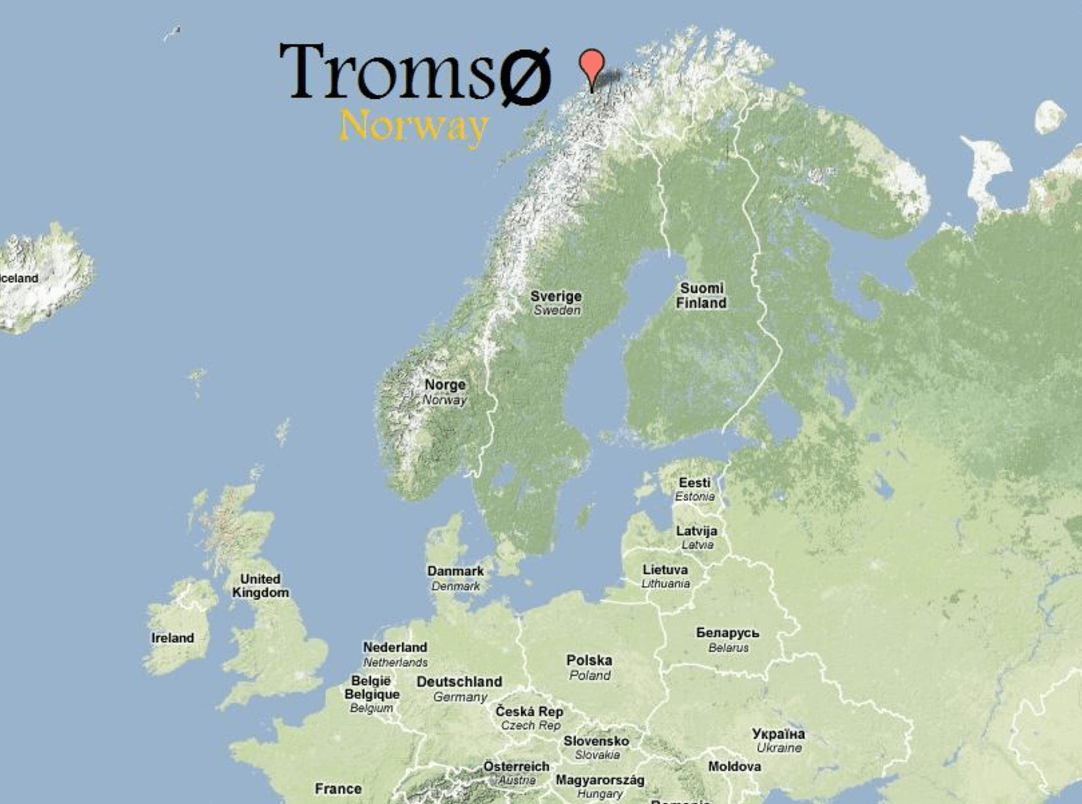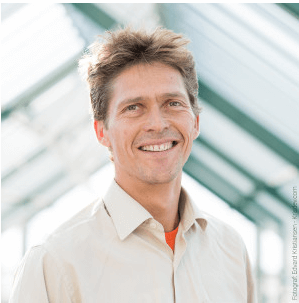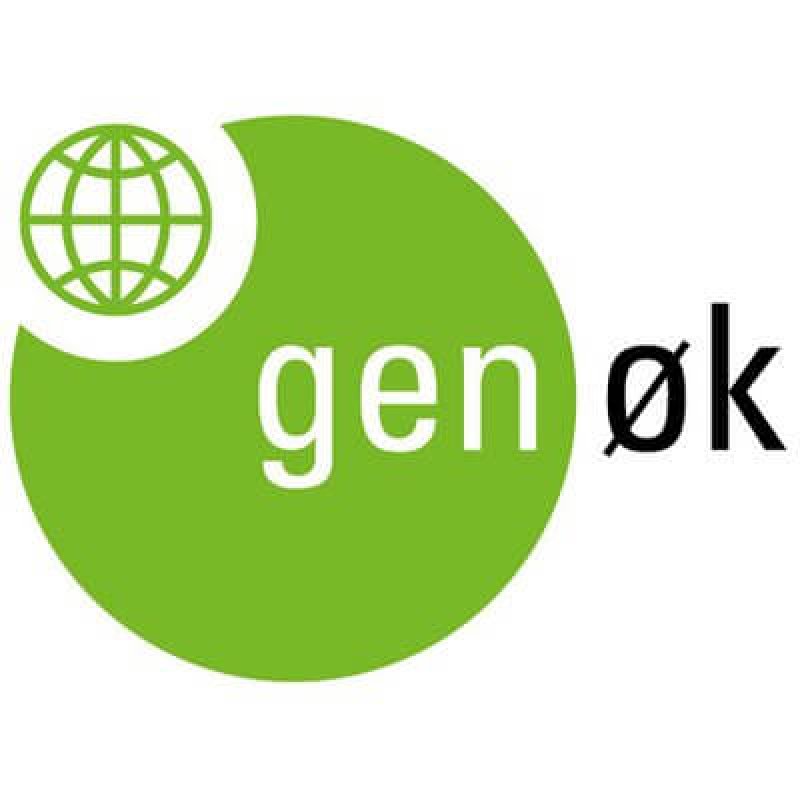Norway has one of the world’s most restrictive set of regulations of genetically modified organisms (GMOs). Farmers are forbidden from cultivating biotech crops and biotech feed is prohibited for farm animals. Attitudes towards biotech are such that even though the salmon industry is allowed to use GMO soy as feed for production, they don’t do it because they fear public perception.
In that light, the lack of response in the wake of a popular Norwegian science program called “Folkeopplysningen” (People’s Enlightenment) was quite surprising. Previously, it had made headlines debunking misconceptions around homeopathy, clairvoyance, and super foods. In September it aired a show debunking the most common myths about GMOs, and there was no public outcry afterward—with one exception.
A small research team located 360 km north of the Arctic Circle, in the small city of Tromsø opined their dissent in a small note. They complained about the lack of nuance and balance in the program. The researchers work for GenØk – National Center for Biosafety, and they think they should have been allowed to tell viewers that there is no scientific consensus regarding the health and environmental risks associated with GMOs.
 I would like to believe that most people who escape the critical gaze of penetrating show like “Folkeopplysningen” would breathe a sigh of relief, but not GenØk. GenØk wanted to be in the show’s crosshairs. The producer of Folkeopplysningen, Lasse Nederhoed in Teddy TV, told me, “If we were going to tackle GenØk, we would have to devote a whole program to them. Because there is something very strange going on there.”
I would like to believe that most people who escape the critical gaze of penetrating show like “Folkeopplysningen” would breathe a sigh of relief, but not GenØk. GenØk wanted to be in the show’s crosshairs. The producer of Folkeopplysningen, Lasse Nederhoed in Teddy TV, told me, “If we were going to tackle GenØk, we would have to devote a whole program to them. Because there is something very strange going on there.”
Strange indeed, because the scientific consensus regarding biotech breeding techniques and biotech crops is broad and durable. The vast majority of scientists working in the relevant fields hold that biotech breeding does not produce more risks than breeding by conventional means. Nor are there credible hypotheses as to why biotech breeding would produce a greater set of risks than conventional breeding techniques.
So, who is GenØk, and what are they doing?
The Norwegian Institute of Gene Ecology (GenØk) was founded in 1998 as an independent foundation and is located adjacent to the University of Tromsø. In 2006, GenØk expanded its mandate when Kristin Halvorsen and the Red-Green coalition government promoted them to the National Center for Biosafety. Its purported vision is the safe use of biotechnology.
GenØk has largely limited itself to biotechnology in agriculture, and from the beginning GenØk has engaged in fierce opposition both in Norway and internationally to the use of genetically modified plants, warning that they could have unintended consequences for our health. As early as 1998 Terje Traavik, who eventually became Director of Research at GenØk, said the following to a local newspaper: We have no means to long-term test the consequences that could result from genetically modified foods. Some examples from abroad are very frightening.
In the early years, GenØk’s leaders mainly work on two things: they organized big conferences on biosafety, and they traveled around the world promoting perceived risks associated with genetic engineering. In 2003 they organized a course with the bouncy title: Regulating a privatized genetic industry which has the potential to destroy the future.
When GenØk wasn’t hosting conferences at home, its leaders traveled the world in search of opportunities to spread their message. In 2002 Traavik & Co. traveled to Zambia, which was in the midst of a famine of biblical proportions. But hunger was not Traavik’s concern. He was concerned that aid coming from the United States contained genetically modified maize. He alerted Zambian researchers about “a long list of theoretical risks” linked to the American corn. This led the Zambian government to refuse aid from the US. Meanwhile, Norwegian aid money was spent on Traavik and his team checking corn on the border to see if it contained GMOs.
 Then GenØk traveled to the Philippines on a study expedition. Monsanto had been planting corn there that had been bred to be resistant to pest insects. The corn had a gene inserted encoding a Cry1Ab protein, otherwise referred to as Bt maize. The Cry1Ab protein comes from the soil bacterium, Bacillus thuringiensis. Bt has been used safely as an organic insecticide for decades and Cry1Ab protein can be considered the “active ingredient”.
Then GenØk traveled to the Philippines on a study expedition. Monsanto had been planting corn there that had been bred to be resistant to pest insects. The corn had a gene inserted encoding a Cry1Ab protein, otherwise referred to as Bt maize. The Cry1Ab protein comes from the soil bacterium, Bacillus thuringiensis. Bt has been used safely as an organic insecticide for decades and Cry1Ab protein can be considered the “active ingredient”.
Cry proteins work as an insecticide by binding with a receptor in the gut of corn borers and similar pest and disrupting their digestive system. The protein is activated by the alkaline environment of the digestive system of these pests. Humans have an acidic digestive system so Cry proteins are digested as any other protein would be. We also lack the specific receptors for the protein to bind to. This is why Bt is such a safe insecticide – it has a very specific and narrow “mode of action.”
Traavik was in the Philippines to collect samples of Bt corn so GenØk could do research on it. In this context, he discovered that a small village near where they grew Bt corn had suffered an outbreak of a mysterious disease. People had come down with fever, breathing problems, diarrhea, nausea, and skin irritations.
Thirty-nine blood samples were taken from villagers and sent to GenØk’s lab in Tromsø to be analyzed for antibodies against the Bt toxin. They found antibodies in their blood that may or may not have been traceable back to pollen the villagers inhaled from Bt corn plants. They could also have got there in a whole host of other ways. But that did not stop Traavik from venturing forth with the unpublished results to a biotechnology conference in Malaysia and creating hysteria in the Philippines. The harshest criticism of Traavik and GenØk was delivered by a group of American scientists:
There are guidelines for the responsible conduct of science. Your turn has come to follow them yourself. Note that failure to release your data and methodology immediately will prevent any and all legitimate scientists and health authorities from taking your claims seriously.
That was was in 2004. In 2006, GenØk obtained status from the coalition government as the National Center for Biosecurity. One wonders what conclusions the government expected from it.
This is when GenØk really got rolling. Until then, it had not published any basic research which indicated that genetically modified plants constituted an elevated risk to the environment or human and animal health. This marks the point at which Thomas Bøhn, Marek Cuhra, and quite a few water fleas entered the picture.

Water fleas are used as a model organism to test whether a drug can be toxic or harmful to aquatic organisms. They have short lifespans so that multiple generations can be quickly observed, they are genetically very similar to one another, and they are easy to handle and maintain. The first of GenØk’s water flea studies was published in 2008. I expect champagne corks hit the roof up in Tromsø right around that time.
After ten years of having warned us that we didn’t have good enough studies on the long-term effects of feeding animals genetically modified crops, GenØk had now produced research that showed that water fleas receiving Bt maize died earlier than water fleas fed conventional corn. Or had they?
Bøhn and company had produced a science experiment that was more a textbook case of “How Not To Do Science” than a demonstration of health risks presented by the Bt corn. Bøhn and his team had failed to control for multiple variables rendering their feeding trial useless. They had fed the water fleas corn that had been grown at Elizabeth Cruzara a village near Iloilo City in the Philippines in 2003.
The problem is that they had not analyzed the two maize types for nutritional content, or noted other external conditions such as soil, weed spraying or crop quantity; all of which would affect the results. We can see that there are even visible differences between the two maize types. So there was a plethora of variables that could have affected the result, but GenØk concludes that the genetic modification must be the reason why those water fleas did not live as long.

In 2010,GenØk researchers performed a similar study on the same corn, again without controlling for any of the obvious variables that could affect the outcome; again they came to the same conclusion: Bt corn is dangerous to water fleas. Criticism of their work from the scientific community was massive.
In 2014, GenØk took on a new task. It analyzed the nutritional content of soybeans and glyphosate residues taken from thirty-one farms in Iowa USA. Eleven of them organic, ten conventional and ten genetically engineered soy varieties.
The trial was designed to show residues on soybeans of glyphosate. Glyphosate is the herbicide sold under the trade name RoundUp which the biotech soybeans had been bred to be paired with. The soybeans are able to survive an application of RoundUp while the weeds are around them are destroyed, allowing for easier weed management. Unsurprisingly, Bøhn’s team found glyphosate residues on soybeans that had been grown in fields sprayed with glyphosate, while glyphosate residues were significantly lower in the non-GMO and organic fields. What was notable was that they failed to test for the residue of other herbicides.
The non-GMO fields were almost certainly treated with herbicides other than glyphosate – most of which are considered somewhat greater in environmental impact and health risks (but have the advantage of being all but ignored by anti-GMO activists because, while their environmental impact may be greater they aren’t tied to a biotech crop, so their use has not been politicized), but we have no way of knowing because they only tested for glyphosate. Nor did they test for other pesticides – insecticides, fungicides, etc. Of course the organic fields had lower glyphosate residues, but were they lower in total pesticide residue? Maybe / Maybe not. We don’t know because they only tested for glyphosate. So was this about measuring environmental impacts, or coming to a predetermined finding that could be used to generate headlines? GenØk wanted to find RoundUp, and they certainly did that.
Bøhn’s team also looked at the nutritional composition of the soybeans and found that the organic soybeans came out the best. The problem is once again that factors such as the variety of soybean, soil, fertilization scheme, any organic spraying, crop yield and harvest date are not included in the report.
Researchers at The Norwegian Institute of Bioeconomy Research (NIBIO) criticized them for concluding that the organic soybeans had the best composition of nutrients when it simply does not match the figures in the survey:
It is thus very surprising to us that a product with the highest concentrations of sugar, Zn and Ba, and lowest concentrations of Se and fibre is described as having the healthiest nutritional profile. Experts on human nutrition rarely consider enhanced sugar levels in food to be beneficial, and both Zn and Ba may be highly toxic to humans.
After this experiment, which really shows nothing other than different soybean varieties grown under different conditions will have different compositions of nutrients, the GenØk team pressed on with three feeding trials on water fleas.
In all water flea experiments in 2014, 2015 and 2016, the fleas were fed with the soy from 2014. Once again, the experiments show that water fleas react differently to different soy varieties and varying nutritional composition, but that obviously didn’t prevent GenØk researchers from concluding that RoundUp was the reason why water fleas died more quickly rather than any of the variables they had failed to control for.
In 2016, their latest attempt, the water fleas were fed with purified Cry1Ab and Cry2Aa proteins in addition to the RoundUp. The trial was meant to show that the water fleas fed the most toxins die first. This time one would think that several environmental factors had been cleared away, but as EFSA writes in its response, GenØk has used doses of these toxins that one would never find in the water near fields where genetically modified crops are cultivated. So, they can kill water fleas with doses that are not realistic. Congratulations. In addition, the test ran for 78 days as opposed to the 21 days the OECD recommend for water flea tests. Thus, they introduce sufficient statistical noise to draw whichever conclusions they want.
In the EU, it is the European Food Safety Authority (EFSA) that considers whether genetically engineered plants are approved as safe as conventional plants. Because of the chronically poor design of GenØk’s trials, it is impossible to draw any conclusions from their research. Thus, the EFSA has not included any of their studies as a basis of the approval process.
Read that sentence again. None of the trials are viewed as good enough. Seven studies, eight years, $3.6 million per year, 40 employees – and we’ve gotten zero knowledge back.
Worse, it is actually not zero knowledge, it’s “anti-knowledge.” GenØk has, ever since it was founded 18 years ago, written page after page about how we don’t have enough knowledge of the long term effects of releasing genetically modified organisms into the environment. The problem is that GenØk does not help to close these gaps. It just contributes to further confusion. And there are many who listen to them.
In Norway, we have what is called Bioteknologirådet (Biotechnology council) which was first established in 1992 and has since then been a consultative body for the government and parliament on both ethical and environmental concerns related to genetically engineered crops for import. Bioteknologirådet has yet to recommend importing even a single genetically engineered food crop (Oddly, they made an exception for one variety of carnation flower, of all things). That is unsurprising when one looks at how tight the bonds are between the Council and GenØk.
Former Director of Bioteknologirådet, Sissel Rogne, sat simultaneously on the Board of GenØk. The current leader of Bioteknologirådet is Kristin Halvorsen. Back in 2003, she suggested making GenØk the National Center for Biosafety, and she carried it through when she entered the coalition government in 2006. Terje Traavik has been both the research director at GenØk and a member of Bioteknologirådet. The most overlap, however, is with Aina Bartmann. She was a member of Bioteknologirådet from 2000 to 2008 while serving as the chair of GenØk in the years 2005 to 2011. She is currently the coordinator of the organization Network for GMO-Free Food and Feed (No GMO Norway). One could imagine the outcry if it had been a former chairman of Norway’s Center for International Climate and Environmental Institute had been transferred to a job in the Climate Skeptics. When it comes to opposition to biotech, these guys do not even have to hide their activism.
For not only do they perform badly designed water flea studies – they also bring conflicts of interest to the table; in two papers, one in 2014 and one in 2016, John Fagan (Read GLP Profile here) is listed as a co-author. Fagan is a known anti-GMO activist. Additionally, in 1996, Fagan founded the company Genetic ID which provides technology to analyze foods to detect whether the DNA has been altered by genetic engineering. Under “conflicts of interests”, where normal (ethical) scientists would have mentioned that one of the authors has a financial interest in a company that makes money from the controversy surrounding biotechnology, they declared no conflicts.

GenØk has also supported other activist scientists and dubious science from other organizations as well. They were supportive of Gilles-Éric Séralini (Read GLP Profile here) at the University of Caen in France. In 2013 he published his infamous rat study. Séralini used a special kind of rat often used in researching carcinogenicity because they easily develop cancer so impacts of carcinogens are more easily detected. He conducted a feeding study on genetically engineered corn – “NK603”, bred to withstand being treated with the herbicide RoundUp.
The rats fed NK603 developed tumors, pictures of which were featured in that episode of “Enlightenment”. However, the rats in the control group also developed tumors – they just weren’t featured in photos in the paper Séralini published – a major ethical lapse. The paper was also widely criticized for the small number of rats in the control group, as well as a litany of other design flaws. As one of the only research centers in the world dedicated to biosafety, GenØk came out and declared publicly that this miserably designed study somehow showed that there are unknown dangers with the use of GMOs. The study has been withdrawn from the scientific journal where it was first published. Meanwhile, Gilles-Éric Séralini sells homeopathic medicine to detox the body from “GMO poisons.”
Up there in Tromsø, they like to watch movies, and when the documentary OMG GMO came out in 2013, GenØk researcher Anne Ingeborg Myhr said in an article on Forskning.no (Research.no):
“A new film attracts attention and debate.” GMO OMG “sets a startlingly critical eye on genetically modified organisms (GMOs). Hopefully the film will lead to raised awareness in all who today have no understanding of how modern genetic engineering challenge nature.”
 “GMO OMG” provides insights and razor-sharp analysis of genetic modification along the lines of “Loose Change”, the conspiracy-laden documentary about the 9/11 terrorist attacks. It is a pure and simple activist film that has nothing scientific to offer. Reading critics tear it to shreds in pages of The New Yorker and Scientific American was better entertainment than watching the film.
“GMO OMG” provides insights and razor-sharp analysis of genetic modification along the lines of “Loose Change”, the conspiracy-laden documentary about the 9/11 terrorist attacks. It is a pure and simple activist film that has nothing scientific to offer. Reading critics tear it to shreds in pages of The New Yorker and Scientific American was better entertainment than watching the film.
It’s not just GenØk who thinks Hollywood might help us understand the complex connections in gene technology. When Sissel Rogne was the leader of Bioteknologinemda and on the board of GenØk, she traveled around the country and to high schools lecturing for teachers and students. During these seminars, Rogne set aside two hours to watch the 1997 film Gattaca. The film is a dystopian fable featuring Ethan Hawke and Uma Thurman living in a society where everything is determined by genetics, and only those with the best genes have the opportunity to live a worthy life. Now, if they absolutely wanted to show propaganda films to scare young people, why couldn’t they have shown Jurassic Park instead? It is a better film. And it has dinosaurs.
Not only youth were to be indoctrinated in how murky gene technology supposedly is, kids should also experience it. In 2008, kids who visited GenØk’s stand in the research park Tromsø would meet the mad professor Kazoo and his five-legged chicken. Marek Cuhra would tell UiT, “Unfortunately, we have seen that when laboratories adjust some genes, it may result in unforeseen consequences.”
So this is what we get for around $3.6 million a year.
So, what are they doing up there in Tromsø? Because it is not science. The French science communicator Marcel Kuntz calls it “parallel science.” Political parties and NGOs are very fond of the science that confirms what they promote. Greenpeace wags its finger and tells us that there is a scientific consensus that climate change is man-made. When it comes to the consensus that genetic engineering is as safe as traditional breeding, it is as strong, if not stronger, than the consensus on climate change. But then Greenpeace and political groups cherry pick marginalized research and individual researchers who believe things radically different from the established consensus. In 2006, when the political platform of Norway’s coalition government stated that GMOs were dangerous, it started shopping for researchers who could corroborate what they had already decided.
They were unable to find those researchers among the heaviest and oldest plant research center in Norway, based at the Norwegian University of Life Sciences (NMBU). At NMBU, they don’t sway with alternating ideologies or fashions among politicians in Oslo. So the coalition government instead found a marginalized foundation up at the ice edge. This is how Norway has become an anti-scientific superpower in the field of biotech and GMOs.
It is now time that our current government ends this charade in Tromsø. It has lasted long enough. Dr. Kazoo et. al should hang up their lab coats, and we should move everything related to biosecurity and GMO research down to the grown ups at NMBU at Ås.
This article is slightly adapted from a Norwegian version which appeared originally on Dagbladet as Hva er det de driver med oppe i Tromsø?. It was reposted here with permission from the author.
Øystein Heggdal is an agronomist with an bachelor’s degree in environmental an natural resources, and is currently working as an journalist in an Norwegian farm magazine. Follow him on twitter @OysteinHeggdal
Liz Langberg is a social worker and cognitive therapist in Oslo, Norway. Follow her on twitter @LivLangberg1































